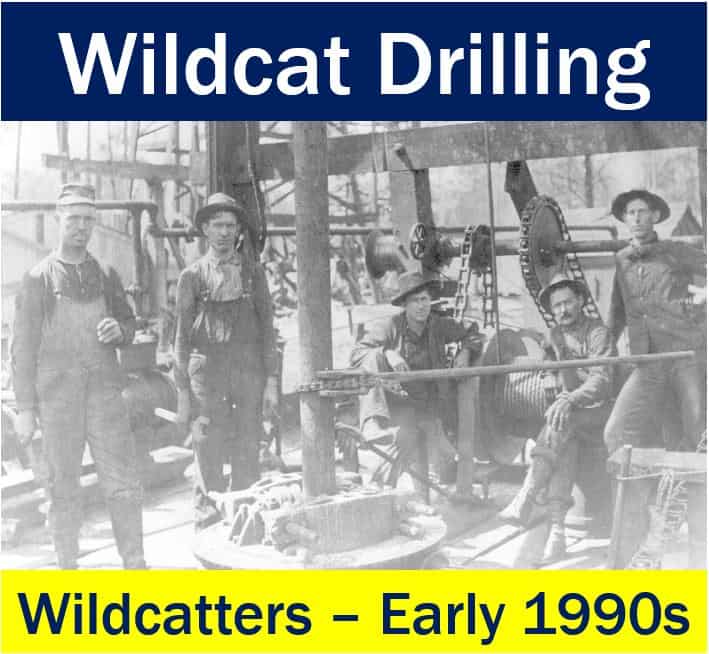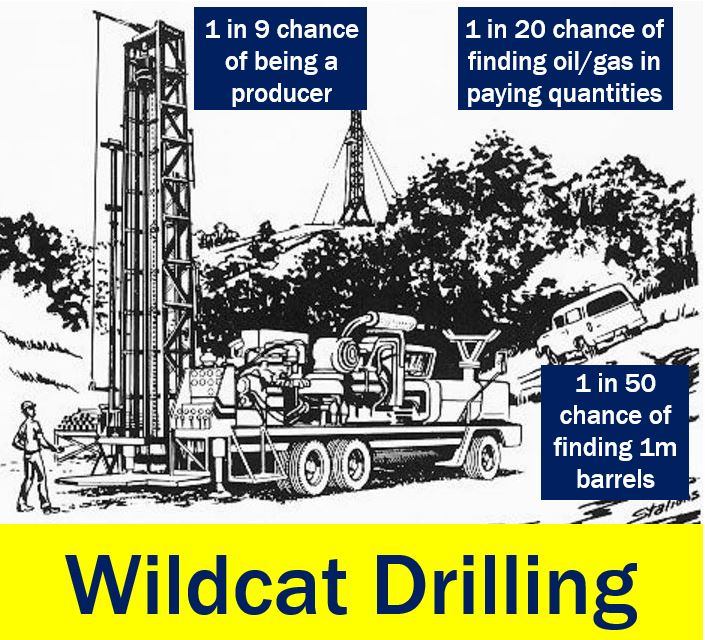Wildcat drilling means drilling for oil or natural gas in areas that have remained unexplored or unproven. The drilling venture is much riskier if the area has no history of oil or gas production, hence the word ‘wildcat’. Investors who are risk-averse would never consider joining a wildcat drilling operation.
As with a wildcat business – one in which the risk of huge profits are the same as huge losses – in wildcat drilling the investment might pay off handsomely or cause the investor to lose a lot of money. For small oil and gas companies, wildcat drilling can be ‘make-or-break’ ventures.
As the area is seen by many as a bit of a financial shot in the dark, those who choose to enter into a wildcat drilling partnership are exposed to extremely high risks.
However, if the exploration does discover oil or gas, the investors will be rewarded with immense profits.

In the world of oil and gas exploration, a wildcat well is an exploratory oil well that is drilled in land not known to be an oil field – it is the well where wildcat drillers explore.
What is a wildcatter?
A wildcatter is a person who drills wildcat wells. In American oil and gas history, there are some notable wildcatters, including: Thomas Baker Slick Sr., Glenn McCarthy, Clem S. Clarke, Joe Trees, and Columbus Marion Joiner.
Joiner found the East Texas Oil Field in 1930, a giant field covering 140,000 acres (570 km2). The East Texas Oil Field, where more than 5.42 billion barrels of oil have been extracted to date, has 30,340 active and historic oil wells.
The initial wildcat drilling success came from its low operating costs and the ability of crews to mobilize rapidly.
By the 1930s, however, these types of ventures became much less common as the shallow fields were tapped out. This meant that drilling had to go deeper, which significantly pushed up wildcat drilling operating costs.

Wildcat drilling needs skilled crew
The significance of a wildcat well for the wildcat drilling team, is that by definition very little to nothing regarding the subsurface geology is known with certainty.
For this type of venture to have the best chance of success, the drilling crews need to be extremely skilled and experienced in analyzing the formations they drill in order to determine whether to continue, and how.
Wildcat drilling costs
How much a well cost depends primarily on the daily rate of the drilling rig, plus the extra services needed to drill the well.
In 2015, Rigzone estimated that deepwater drilling rates cost approximately $520,000 million per day. Many wells can end up costing more than $100 million.
Onshore well drilling is considerably cheaper, with the costs of a well ranging from $1 million to $15 million.
All the figures mentioned above do not include the costs related to the risk of explosion and oil leakage, plus their cleanup efforts and compensation payments to affected individuals and communities.
